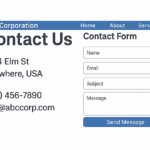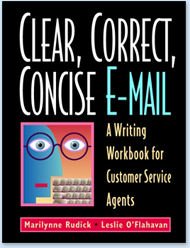 Customers really like live chat. Recent studies show customers are more satisfied with chat than email or phone (73 percent satisfaction for chat compared to 61 percent and 44 percent for email and phone). And more customers are choosing chat. For example, one chat vendor reported its online retail clients saw a 30 percent year-over-year increase in Cyber Monday chats.
Customers really like live chat. Recent studies show customers are more satisfied with chat than email or phone (73 percent satisfaction for chat compared to 61 percent and 44 percent for email and phone). And more customers are choosing chat. For example, one chat vendor reported its online retail clients saw a 30 percent year-over-year increase in Cyber Monday chats.
Chat may be popular, but doing it right isn’t easy. Writing high-quality chat is a lot harder than it looks. (There’s way more to chat than typing fast and pushing links!) Whether you’re planning to start chatting with customers this year or your team is chatting already, be sure your customer service agents have these solid, chat-specific writing skills.
1. Mix templates and free text. I strongly believe chat agents should have access to a library of high-quality prewritten content (templates) and that they should use templates to answer customers’ questions. But customers don’t respond well to canned chats, so agents need to be able to switch from template to free text, as needed.
Matt, a Vonage chat agent, does a good job of this. He’s chatting with John, a customer who’s switching from landline to Vonage service. Matt’s first statement is clearly a template, but his second is free-texted to answer John’s question directly.
John: What’s the cost of your best plan for small business customers?
Matt: Our Premium Unlimited Plan, available for small businesses, provides unlimited local and long distance calling anywhere in the US, Canada and Puerto Rico for business customers. Also, new for this plan is FREE calls to 5 select European countries for only $49.99 a month plus taxes/fees! You also get a free dedicated fax line with 20+ FREE advanced phone features.
John: OK that’s good. I am glad to learn about the fax line. But can i keep my existing fax number? Can the Vonage line work with my ancient Brother fax machine?
Matt: It will be able to work with the fax machine. What you will do is place the order with me. Then you will call customer care to transfer the actual fax line number over.
2. Read critically. You might be asking, “How can reading be a writing skill?” But critical reading is the bedrock of all writing skills. Critical reading is the cognitive ability to read what the customer is saying and discern what the customer is asking. In chat, critical reading is especially important because chat requires customers to write quickly, without editing, and sometimes their writing is really sloppy and confusing. If agents can read critically, they can take in the customer’s messy writing and figure out what the customer is really asking.
3. Use the brand voice. When they chat, agents represent their company’s brand, so they should sound like the brand. If, for example, you chat for a surf and skate clothing retailer, and your company’s marketing message is “We keep the world ripping and rocking,” you need to be able to use that brand voice in your chats. It would be jarring to write, “It has been a pleasure assisting you in purchasing your shoes.” Better to write, “I know you’re going to like your dope kicks.”
4. Signal to the customer when he needs to wait or when you’ll wait. In many chats, customers and agents sometimes have to step away to get information. Good chat writing makes it clear to the customer when he needs to wait or when the agent will wait for him. When chat agents manage wait or away time properly, there’s little need on either side to ask, “Are you still there?”
In this chat, agent Vanessa does a good job of signaling to the customer when she’s stepped away from the chat.
Customer: What’s the status of my return for replacement on order number 12345678?
Vanessa: Hello, Lisa. I’m happy to help you with that. Please give me one moment to check the status.
Customer: Thank you!
Vanessa: The return package for order #12345678 has arrived in our warehouse, and we’ve begun processing your request for replacement.
Customer: Excellent! Are both items still in stock?
Vanessa: Yes, both wheels are still available.
Customer: Great! I appreciate your assistance! Will I get an email with tracking information when they ship?
Vanessa: Yes, you will get an email. Please hold one moment, and I will see if I can get the shipping date for you.
5. Ask probing questions. Chat is a great channel for helping customers clarify what they need or want. Watch how Annabelle, an expert chat agent for Zappos, keeps probing to help the customer narrow and clarify her shoe question. In the early part of the chat, almost everything Annabelle writes is a question. Some are matter-of-fact (shoe size) and others are open-ended (“What key things are you looking for?”) This mix of question types engages the customer and gives Annabelle the best shot at finding the shoe the customer wants.
Customer: I am looking for shoes that will allow me to walk comfortably. I have nerve damage in my foot.
Annabelle: Okay, so you are looking for walking shoes?
Customer: Yes, let’s start with walking shoes. I will need to replace my dress shoes too.
Annabelle: Okay no problem, one moment please…
Annabelle: What size do you wear?
Customer: I wear a size 7 or 7.5
Annabelle: What width are your feet?
Customer: Average width
Annabelle: Okay. What key things are you looking for in a shoe?
Customer: Comfort, really. I have a lot of pain in the ball of my right foot. I can barely walk on it.
6. Empathize. It would be easy for chat agents to let their dignity slip and respond in kind to angry, rude, or stressed customers. Instead, you should empathize. Empathy is more dignified than telling customers which bridge they can go jump off of. Seeing things from the customer’s point of view is essential because it makes customers easier to manage, which controls chat time. Use empathy statements like these:
- You’re right.
- Me too.
- I can definitely understand
- I can see your point
- That sounds difficult
.
7. Close with something genuine and specific. End the chat on a high note. Avoid using only the generic closing: “Is there anything else I can help you with today?” or the generic sign-off “Thanks for chatting with us.” While those are polite and necessary prewritten statements, you can go beyond what’s expected. Try closing with a specific reference to a topic covered in the chat:
- Thanks for upgrading your account, Mary. Have a great day!
- I’m glad we could help you troubleshoot the problems with your modem…
- I’m sorry about the problem you had with our website today, and I hope…
.
8. Admit when you don’t know something. Admit you don’t have the answer, then go get it – pronto. Chat is the best channel for live problem-solving, so customers often chat when they’re in the middle of a task. Good writers are prepared to say things like, “Let me check my knowledgebase to see whether there’s an update that would fix the problem you’re having.”
9. Shut down prank chatters. One of my clients is a clothing retailer that targets the under-21 crowd. At about 3:30 each day, after-school prank chatters jam the queue with silly stunts like giving a pornographic username and repeatedly asking the agent, “How do you like my name?” Good customer service writers have a strategy (and management’s permission) to shut down this type of chat, so they can move on to real customers.
10. Use correct spelling and punctuation. While chat is certainly less formal than other types of writing, spelling mistakes and punctuation errors never improve communication. You certainly don’t have to write standard, formal sentences in a fast-paced chat, but you should spell words and use apostrophes correctly. Bloopers like these make your company look bad and your service questionable:
- Whats the start and end date for your trip?
- We will be glad to assist you and Ship your items to toronto Canada
- Currently, we are expereincing the technical glitch in our system.
.
Keyboarding errors like these are not as bad, though it’s best to avoid them too:
- I am glad I was able to assist you you today.
- Onnce you’re done, click on the “Continue” button.
- You have a wnoderful day ahead!
.
Want more advice about writing chat to customers? Check out these articles and whitepapers:
- 10 Writing Skills Agents Need to Chat With Customers
- In live chat, don’t argue with customers who are trying to pay
- Are 6 exclamation points too many? Punctuation’s gone wild in live chat with Crate and Barrel
- Verizon customer service chat: How to kill your relationship with your customer
- “Doing the needful”? Does odd wording harm the quality of customer service chat?
- Tips for writing customer service chat







Thanks for the helpful tips. Our desk will be rolling out a Chat option again soon. We tried it a few years ago but it didn’t take off, so we are going o try it again. Any advice on how to manage a Help Desk rep’s time between chat and ACD calls? I have a team of 8 that will be responsible for for handling chat support on top of ACD calls.
Hello, Wendy – Thanks for your comment. If you are relaunching chat, I’d schedule your team to give chat its best shot at success. While chat volume will probably be somewhat low when you launch, and therefore a bit difficult to predict, I still think it would be best to allow reps to do chat only and phone calls only, at least while your team is getting its bearings. So I would give each rep at least a couple of hours per day when he or she is chatting only – no calls. This chat-only period will help you identify training needs and allow you to discover who can do multiple simultaneous chats. Once you have an idea of the type of customers who choose chat and the kind of help they need, you’ll have a better sense of whether your Help Desk reps can successfully chat and talk at the same time. And chew gum, of course!